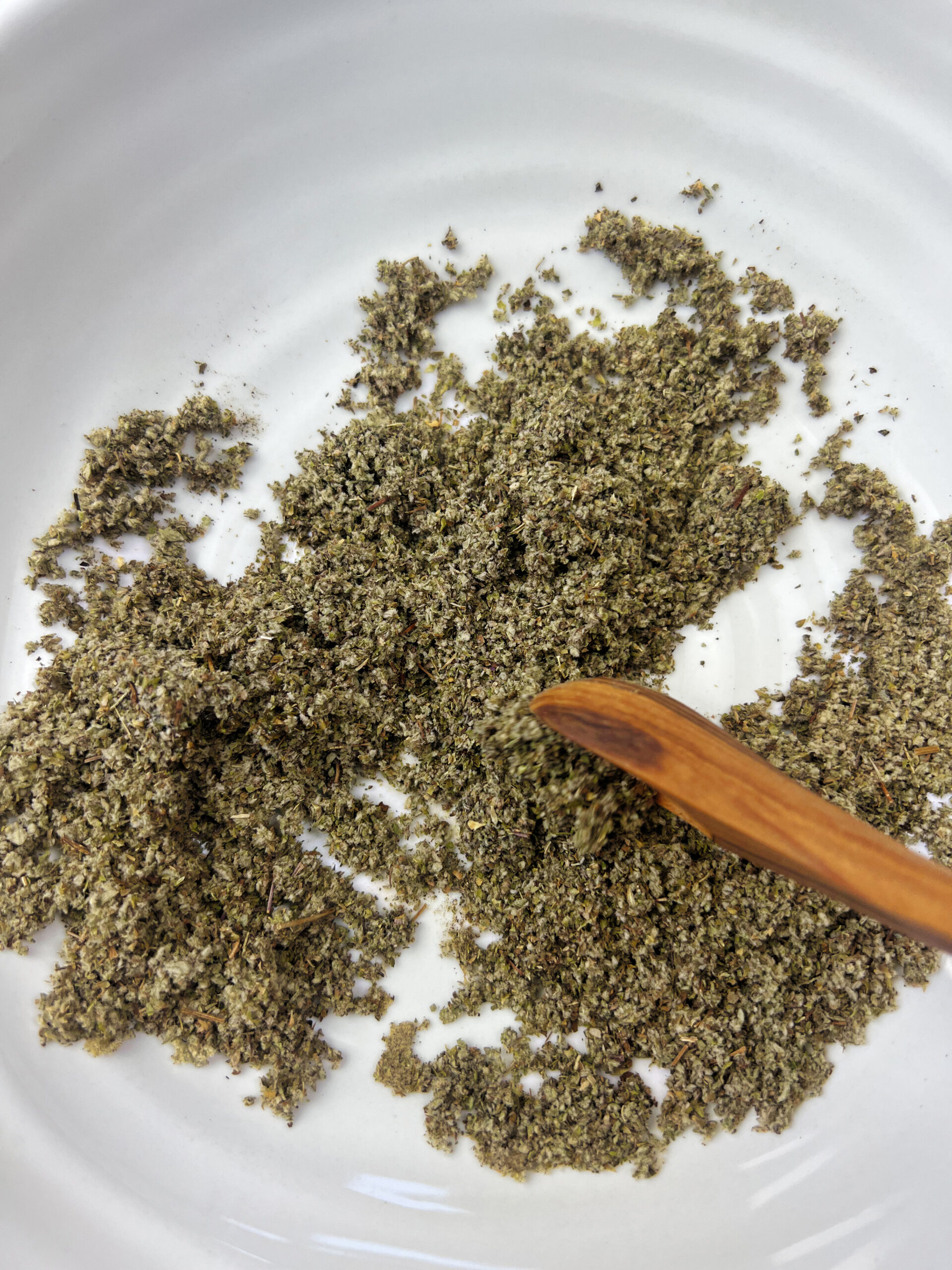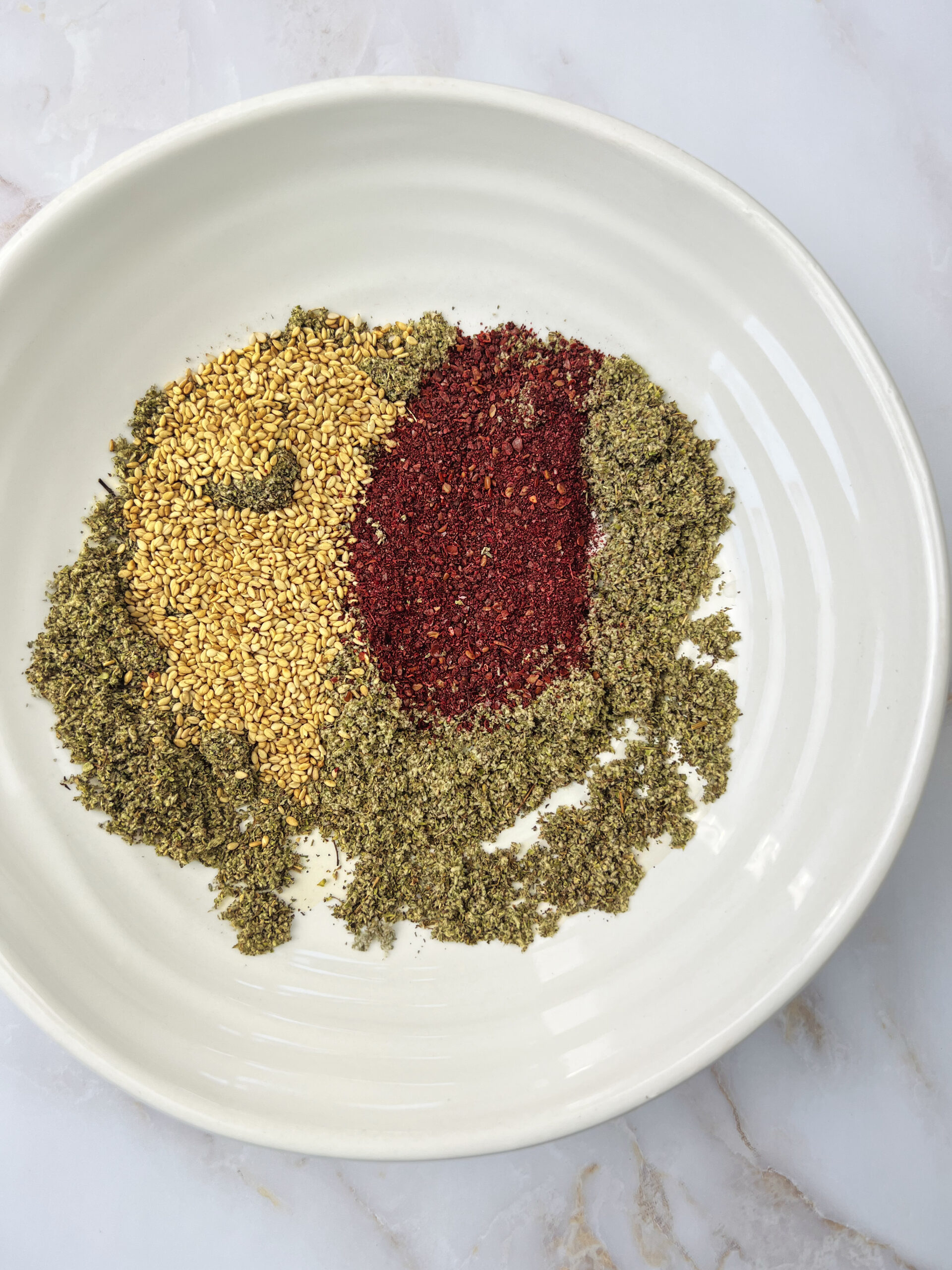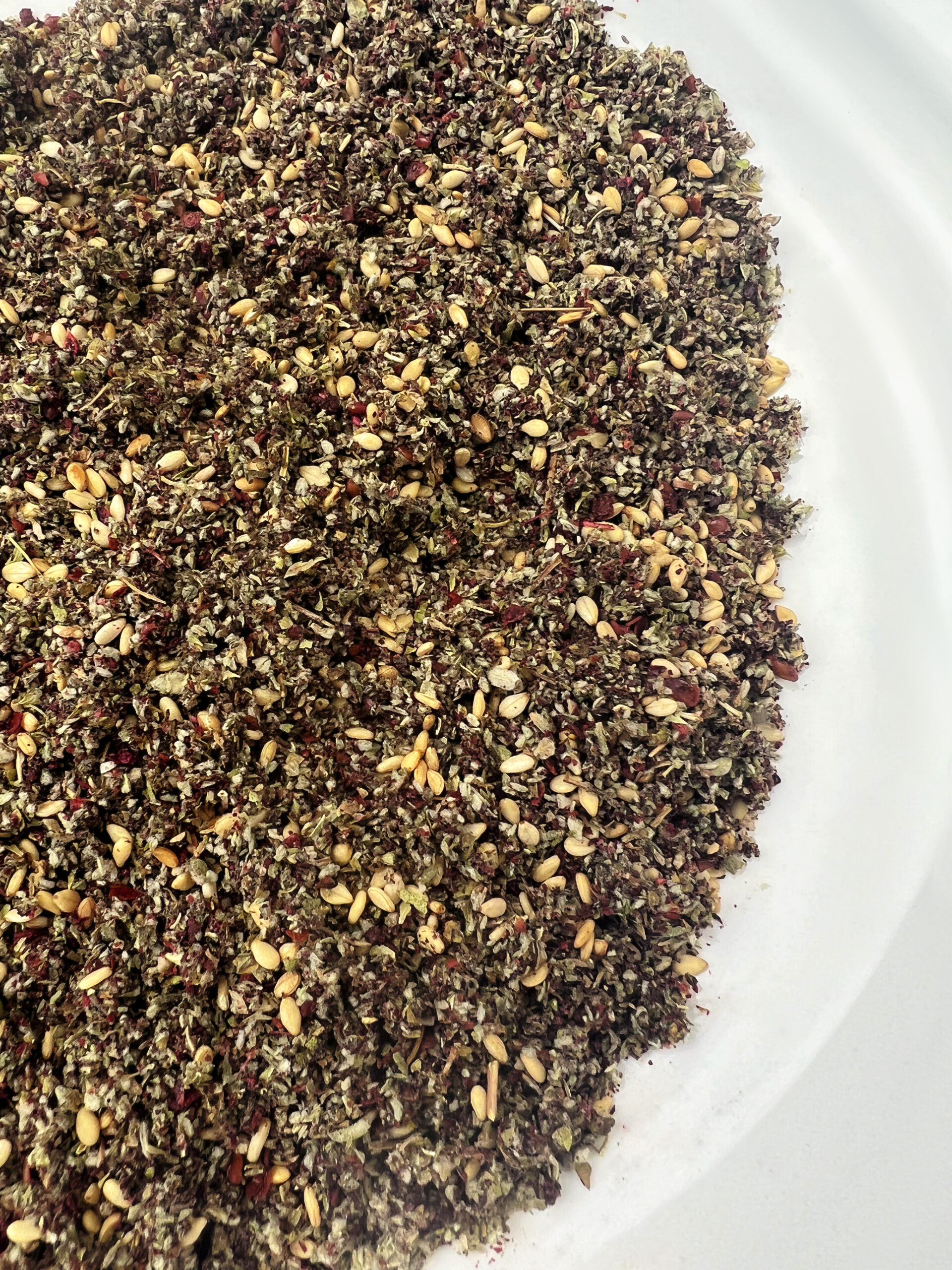Za’atar is my all-time favorite traditional spice that has been a staple in my kitchen since I remember. Growing up on this Middle Eastern blend of herbs, I can’t imagine a day without its unique, earthy, and tangy flavor. Whether used as a topping for pita bread, a seasoning for meats, or a veggie dip, za’atar always adds that special touch to any dish.
Table of Contents
Growing up in Jordan, I was raised on this delightful spice blend, often savoring warm, freshly baked pita bread drizzled with olive oil and generously sprinkled with za’atar. This cherished routine made za’atar my go-to spice blend for an authentic Middle Eastern flavor burst. In this article, I’m excited to share a timeless za’atar spice recipe passed down from my sister, who still resides amidst the breathtaking landscapes of Jordan.
What is Za’atar?
Za’atar has a dual identity in Middle Eastern cuisine. One identity is the dried herb known as Syrian oregano. This herb is crucial in the Zaatar ingredients list. It’s known for its role in the spice blend and medicinal properties. Syrian oregano can be boiled like tea, relieving coughs and stomach discomfort. It is a household staple in Syria, Lebanon, Jordan, and Palestine. Za’atar also refers to a spice mixture. This mixture includes za’atar herb, Syrian oregano, and other spices. These spices vary by region, creating a range of unique flavors.
Ways to Use Za’atar Spice Blend
Za’atar is a culinary gem, offering versatility making it a favorite among food enthusiasts. Here are some delightful ways to incorporate za’atar into your culinary creations: sprinkle it on yogurt, eggs, labneh, watermelon, fresh vegetables, and more. Here is a few more ideas for you to explore:
- Marinated Meats: Transform meats into marinated delights by infusing them with savory and slightly tangy flavors that dance on the palate when you season them with za’atar.
- Zaatar w Zeit: Try this delightful combination, especially for a quick, easy, and utterly delicious snack. Simply sprinkle za’atar over boiled eggs, plain yogurt, or feta cheese.
- Za’atar Manakeesh: Indulge in a Middle Eastern street food classic – Za’atar Manakeesh. Known for its soft texture and rich flavor, it’s a must-try for za’atar enthusiasts.
- Bread and Chips: Sprinkle za’atar on taboon bread or herb pita chips for a nutritious and tasty snack that’s perfect for dipping.
- Roasted Chicken: Season your roasted chicken with a blend of za’atar and sumac to introduce a symphony of robust and distinctive flavors.
- Toasted Nuts: For a healthy and flavor-packed snack, try toasted nuts sprinkled with za’atar. It’s a delightful combination that’s both nourishing and irresistible.
- Hasselback Potatoes: Elevate a timeless classic with my Hasselback potatoes seasoned with creamy yogurt and za’atar. The possibilities are endless for incorporating za’atar into your culinary adventures.
Discover the Health Benefits:
Za’atar, also known as Syrian oregano, brings more than just delicious flavor to your dishes. It’s a powerhouse of health benefits!
- Immunity Booster: Packed with vitamin C, Za’atar strengthens your immune system. Say goodbye to frequent colds!
- Natural Antibacterial: Got a cough? Za’atar’s antibacterial properties offer relief. You can even brew it into a soothing tea.
- Nutrient-rich: This herb contains manganese, vitamin K, and vitamin E. They’re like a boost for your bones and overall health.
- Mental Clarity: Some say Za’atar can sharpen your mind. It might just be your secret weapon for staying alert!
Did you know I’ve been growing Za’atar in my garden and using it to make tea? It’s a taste of well-being right from my backyard!
Where Can I Get Za’atar?
The availability of za’atar has increased in grocery stores and online platforms, making it more accessible to culinary enthusiasts. Renowned chefs and upscale restaurants have endorsed it, boosting its popularity. You can find a variety of authentic za’atar blends on platforms like Amazon. However, be cautious, as some commercial brands may include fillers like wheat, compromising authenticity.
For those who want to make their za’atar at home, you’re in luck! I’ll share a simple and delicious homemade za’atar recipe in this blog. You can create your blend with the perfect balance of herbs and spices to suit your taste.
Zaatar Substitute
If you can’t find Syrian oregano, a key zaatar ingredient, in your local grocery store, don’t worry. There’s a simple and accessible Zaatar substitute available. You can create it by blending dried oregano and thyme, which share a similar flavor profile with Syrian oregano. Since they belong to the same botanical family, they make a suitable and reliable alternative when you want to make a zaatar recipe but can’t find the traditional herb.
Preparing Homemade Za’atar Spice Recipe
Soaking and Rinsing:
- Gently soak the fresh za’atar or other herbs in cold water.
- Rinse them thoroughly to remove impurities.
Drying Process
- Pat the herbs dry using a clean kitchen towel.
- Lay them flat on a tray lined with towels.
- Place the tray near a window, avoiding direct sunlight to prevent browning.
- After a day, remove the towels and flip the herbs to dry them.
- Expect approximately a week for the herbs to dry completely.
Grinding
- Finely grind the dried herbs ford with other zaatar ingredients for a seamless blend.
- A spice grinder is ideal for achieving a consistent, fine texture.
- If a grinder is unavailable, manually grinding and then sifting through a strainer also works, yielding a semi-soft, fine grind ready for your zaatar recipe
Preparation



Ingredients:
Adjust Servings
| 1 cup dry zaatar (if you don't have zaatar use a mixture of dry thyme and dry oregano) | |
| 1 tablespoon olive oil | |
| 1 tablespoon sumac | |
| 1 tablespoon toasted sesame seeds |







I would love to hear your experience!
Have you tried to make your own mix of Za’atar? Please feel free to leave me a comment. I love to hear from you.